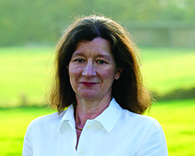 A political revolution is brewing across England as a new kind of party raises its head, galvanised into action by the localism agenda.
A political revolution is brewing across England as a new kind of party raises its head, galvanised into action by the localism agenda.
And though they may be small gatherings of like-minded souls, their resolve is strengthening.
Developers beware – these groups share a deep-seated fury towards how their local authorities have set out to deliver thousands of new homes in their backyards.
“We tried to work with the district council,” says would-be councillor Dan Starr, a resident of north Essex market town Saffron Walden. “We were concerned about some of the proposals in the draft local plan. There were more than 2,000 individual letters of opposition but the council did not listen. The only solution was to try to become the council.”
A business strategy consultant by day, Starr helped bring several local residents groups together to found political party Residents for Uttlesford last September. “We got two people elected as independents in 2013, one as an Essex county councillor and one to the district council at a by-election. But we realised that we needed a brand. We needed to form a political party,” he explains.
Starr is one of 30 R4U candidates running in the Uttlesford district council election on 7 May. The Tory-led local plan, which attracted much opposition, was found to be unsound by the planning inspector last December. This means the group could play a major role in redrafting development plans for the district if they win seats. This will include controversial proposals put forward by Kier for 300 homes in Saffron Walden.
Understandably, the emergence of groups like R4U is causing some concern for the industry.
“It could make delivering planning permissions much more difficult,” warns Martin Curtis, associate director at public affairs consultancy Curtin & Co. “You will be facing people effectively elected on a ‘no development’ ticket.”
R4U says it supports the planning inspector’s recommendation of 580 new homes a year for its district (a figure slightly higher than the draft local plan) but is concerned that these will be east of Saffron Walden – away from transport corridors to the west.
“We are not anti-housing,” says Starr. “We are not little nimby Englanders pulling up the drawbridge to development. It is about making sure that the future of our district is supported by long-range planning.
“People are struggling to get their children into local schools and struggling to get doctors’ appointments. They face 1km-long traffic jams in a town that is only 2km across. People get rightly concerned.”
Such is the strength of feeling that R4U is also fielding a parliamentary candidate on 7 May. Local councillor Heather Asker is standing as a Saffron Walden constituency candidate to be the Uttlesford residents’ “envoy to parliament”.
And R4U is not a lone trailblazer. There are similar stories to be found in Surrey, Oxfordshire, Merseyside and Herefordshire, where highly-organised groups of social media-savvy local residents are becoming so disgruntled with how their elected representatives are handling the future development of their districts that they are registering as political parties to replace them.
If these new parties succeed in taking seats away from the traditional ones at the many local council elections that coincide with the general election, they could seriously upset the political make-up of some areas.
In Surrey, the Guildford Greenbelt Group is fielding candidates in 24 of Tory-held Guildford’s 48 wards along with one parliamentary candidate, Susan Parker, the group’s leader and co-founder.
“We would like to hold the balance of power in the local authority. We think that is a reasonable ambition with 24 candidates,” says Parker. “We could be the largest party.”
As the name suggests, GGG is staunchly opposed to development on green belt land – a pressing issue for a borough where 89% of developable land falls within the green belt.
Guildford’s draft local plan includes extensive green belt development and a target of 652 new homes each year until 2031. But last year the council decided to delay its submission to the planning inspectorate until after the elections because of the high level of responses received during consultation: 2,873 residents and stakeholders submitted 6,006 responses.
“The local plan process has caused enormous angst,” says Parker, who runs her own accountancy business following a career in the City. “The council is planning for huge population and economic expansion even though the infrastructure cannot cope.”
GGG claims to have led the most coherent and vocal protest against the draft local plan and is campaigning for the new homes target to be revised down to around 300 a year, with brownfield development prioritised.
“It is not a rational or sane plan to produce more and more executive homes. We need affordable housing for the young, some downsizing homes for the elderly and key-worker homes. We do not want a largely developer-driven agenda,” she says.
In common with R4U and other groups popping up across the country, Parker believes the planning system is broken and that localism is failing local people.
“Communities should be able to choose the development that meets their needs, and not suffer plans imposed centrally or by inspectors on behalf of government,” she says.
Exactly how successful GGG, R4U and others have been at making the transition from “anti-development campaign group” to “political party offering solutions” will become clear in a few days’ time.
But Curtis says they are already having an impact. “The very existence of these groups makes councillors think twice about how they behave on planning decisions. They do not want to lose their seats.
“The reality is that developers could help themselves to resist the growth of these groups by working with communities.”
Scott Black, a director at Crest Nicholson, agrees. The house builder recently won consent for 2,000 homes at Arborfield Garrison, in Berkshire, having faced an “absolute cliff of objection” to initial plans submitted by the Defence Infrastructure Organisation.
“We started again and went back to basics,” Black says.
That included explaining to local people that the principle of development had been established as well as explaining the benefits development would bring – new schools, infrastructure, shops, community and leisure facilities.
“Then we spent about six months engaging with local people to understand where the key issues were for them and we addressed many of those. We went from having an unhappy group to having a group that, in the context that nobody wants more homes in their backyard, are very happy.”
But Black admits that the presence of an anti-development party could affect site selection. “If we had two sites and both ticked all the technical boxes, but one had a population that was supportive or ambivalent towards development and the other had a population that was vociferously against, then it would colour our opinion.”
 Residents for Uttlesford
Residents for Uttlesford
What’s the story?
Formed by residents groups in north Essex in 2013 during the local plan consultation process. Registered as a political party last September.
Who is in charge?
The group is chaired by councillor John Lodge (pictured), who was elected to Essex county council by Saffron Walden residents in 2013. He stood on the WeAreResidents.org Independent for Residents platform. Lodge is standing as a district council candidate for R4U on 7 May. R4U’s party leader at Uttlesford district council is Keith Mackman, who was elected as a Conservative councillor in 2011 but became an outspoken critic of the draft local plan. Last October, he left the Conservatives to join R4U.
Manifesto
“We will produce a new local plan which will both guarantee that all development in Uttlesford relates closely to identified need and also satisfies the Planning Inspectorate. We shall involve town and parish councils in arriving at decisions based on evidence, not on political influence. We shall hold to account both developers and the agencies responsible for the delivery of key infrastructure, ensuring that this is reviewed prior to giving planning permission. We will remove political influence over the planning committee, make their meetings more accessible to residents, and reverse the ban on public speakers.”
Numbers game
R4U is contesting 30 of the 44 seats on the district council. Click here to see the current political make-up of the council.
Heather Asker, an Uttlesford district and Saffron Walden town councillor, will take on Saffron Walden’s Tory MP Sir Alan Haselhurst in the general election.
 Guildford Greenbelt Group
Guildford Greenbelt Group
What’s the story?
Formed as a campaign group in 2013 in response to proposals for green-belt development that emerged from Guildford’s local plan process. GGG is an umbrella group formed of parish councils, community organisations, residents’ associations and campaigning groups, together with a number of individual members, across and adjacent to the borough of Guildford. GGG registered as a political party in November 2014.
Who is in charge?
Chartered accountant Susan Parker (pictured) is GGG’s leader and one of its founders. She will take on Guildford’s Conservative MP Anne Milton in the general election. She gave evidence to the parliamentary select committee on the NPPF last year.
Manifesto
On planning and development, GGG pledges to:
• Prepare a completely new local plan, based on real local needs
• Identify five-year housing needs to avoid “planning by appeal”
• Implement a brownfield-first policy using previously developed land before green fields
• Build new homes above car parks without cutting parking spaces
• Conserve all protected sites and nature reserves
• Stop “land banking” by developers
• Enforce new design guidelines with conservation/heritage/green requirements
• Work to change the NPPF, with a local democratic right of veto over major projects
Numbers game
Guildford district council has 48 seats and GGG is contesting 24 of them. Click here to see the current political make-up of the council.
Other parties to watch
FRAG/Community Action Not Party Politics (Formby, Merseyside)
Registered with the electoral commission in April 2014 and backed by campaign group FRAGOFF (Formby Residents Action Group Opposition from Formby), which is fighting proposals in the draft local plan for homes on green belt land in Sefton, Merseyside. It secured its first councillor last year when FRAGOFF chair Maria Bennett won a seat on Labour-led Sefton council with 41% of all votes cast. This May it is putting forward a further five candidates in Sefton, and 10 for Formby parish council, under the banner Community Action Not Party Politics. “We are also aware of other areas around the country who have seen what we did last year and have now registered to stand candidates,” says Bennett.
Rural Oxfordshire Action Rally (In The Vale)
Registered with the electoral commission in April, ROAR (In the Vale) wants to protect the Oxfordshire greenbelt. Not to be confused with well-established campaign group Rural Oxfordshire Action Rally, which also wants to protect the greenbelt but is not fielding any election candidates. ROAR (In The Vale) hopes to work with the original ROAR after the election. It is fielding 13 candidates for seats on the Vale of White Horse district council. There are 51 elected members on the council, which is currently Conservative-led.
It’s Our County (Herefordshire)
Registered with the electoral commission in 2010, the party has 12 out of 58 seats on Tory-led Herefordshire council. Boundary changes mean there will be 53 seats from 7 May and It’s Our County is putting forward candidates in 41 of them. Its manifesto says it stands for “democratically led development, not developer-led ‘democracy’” and pledges to “reduce the current overall housing target numbers to a level the county needs and can sustain”.











